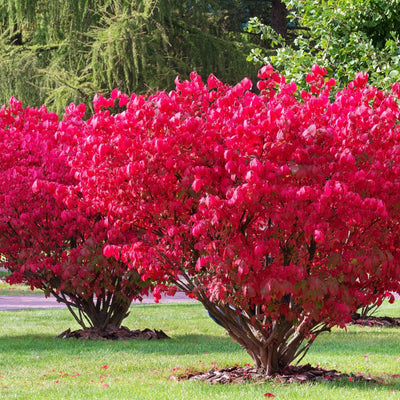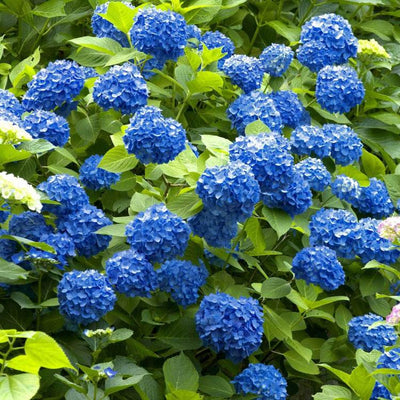Benefits of Shrubs: Beauty and Health for Your Garden
Planting shrubs is one of the best things you can do for your yard to make it look good and stay healthy. Placement of shrubs with care provides protection, structure all year, and seasonal colour. It also makes the soil more stable and helps pollinators. When gardeners think about the benefits of shrubs, they make investments in the long-term health of the environment and value of the scenery that last for decades.
It's very important to choose the right species whether you want low hedges, flowery accents, or a place for birds to live. This guide will help you choose shrubs for your yard, pair flowering types with each other, and take care of both small and large bushes.
Why Shrub Beauty Matters in Your Landscape
Shrubs are good for more than just making your garden look nicer. In a garden, shrubs make the middle layer, connecting the field to the canopy and giving the garden a sense of depth. They help keep the earth stable, cut down on runoff, and give animals a place to live.
Good shrubs for landscaping choices can:
- Provide privacy screens and wind protection.
- Fill the garden with flowers, berries or autumn colour to make it more interesting.
- Fill in space that would normally be watered or weeded to cut down on upkeep.
A plant like Hydrangea Arborescens ‘Snowhill’ has pretty summer flowers that don't need much care. This shows that flowering shrubs for gardens can be both beautiful and useful.
The Practical Benefits of Planting Shrubs
When you think about the pros of bushes, you should think about what each plant will do for your yard. Some plants are great for privacy, others are great for pollinators, and still others are great for low-maintenance borders.
Some useful benefits of shrubs are:
- Saving energy: shade and wind protection lower the cost of heating and cooling.
- Stopping earth from washing away: Roots hold soil in place on slopes and banks.
- Wildlife: Birds, bees, and butterflies eat the flowers on flowering bushes.
- Easy to care for: Once established, many of the best shrubs for the garden don't need much pruning or fertilisation.
A well-placed Burning Bush is a dramatic way to show how colour and structure can work together in the autumn. The Burning Bush has bright autumn colour and a strong shape that looks good in mixed beds.
Flowering Shrubs for Year-Round Interest - Deciduous vs Evergreen
If you know the difference between evergreen and deciduous shrubs, you can plan for excitement all year.
-
Flowering shrubs for garden beds that lose their leaves in the autumn make beautiful seasonal displays and they are great for places where you want the seasons to change quickly.
- Evergreen shrubs provide structure and background greenery in the winter and can be used for concealment all year.
Mix the two to make a scene that changes. In the spring and summer, group flowering shrubs together to attract pollinators. In the winter, count on evergreen plants to keep the shape of the garden.
Choosing the Best Shrubs for the Garden
Matching plant requirements to your spot is the first step in choosing the best shrubs for the garden. Check how much sunlight the area gets, the type of soil it has, and the plant's full size before you put it.
How to make a smart choice:
- Look at the light and dirt to find shrubs that will grow well there.
- Think about the plants' full size so they don't take up too much room.
- Choose a range of bloom times to get colour all the time.
- If you want easy care, choose varieties that don't need much attention.
When you only have a small amount of room, choose small shrubs for landscaping, like compact hydrangeas. The Hydrangea Arborescens ‘Snowhill’ is a great example of a flowering shrub that stays the same size and looks great in mixed hedges or as a foundation plant.
Planting Shrubs: Practical Steps
If you plant bushes correctly, they will stay healthy for a long time.
Clear steps for planting that will work:
- Make a hole that is twice as big as the root ball but not deeper.
- Put the bush where the root tip is level with the ground.
- Fill in with native soil and make sure there are no air gaps by watering the area well.
- Spread mulch in the shape of a doughnut to keep water in and stop tree rot.
By doing these simple things, you can help your small shrubs for landscaping get off to a good start and avoid future transplant stress.
Care Tips for Effortless Shrub Performance
Shrubs stay healthy and beautiful with little work. These tips for taking care of shrubs will help you do less work and get more results.
Simple things to do for maintenance:
- Water deeply and less often to help the roots grow deep
- Cut back bushes after they bloom in the spring and late winter for shrubs that bloom in the summer
- If the soil isn't very good, use a balanced slow-release fertiliser in the early spring
- Mulch once a year and add more as needed to keep a 2 to 3 inch layer
Your best shrubs for the garden will stay strong without constant attention thanks to these small things.
Avoiding Common Shrub Mistakes
A lot of troubles begin when you plant. When planting bushes, don't do these things:
- Don't plant too deeply or bury the root flare.
- Do not plant too close together, as this can cause disease and crowding.
- Don't give your plants too much fertiliser, as that can lead to weak, fast growth.
If you make a sound plan ahead of time for choosing trees and shrubs, you can avoid most long-term problems and keep up with the maintenance.
FAQs
What is shrub beauty in the garden?
The combined artistic and ecological value that shrubs add, such as their flowers, leaves, and shape, is called shrub beauty.
What are the practical benefits of planting shrubs?
Shrubs provide shade, stop soil erosion, provide a home for wildlife, and provide support all year.
Which shrubs are best for year-round beauty?
In order to maintain attention all year long, combine deciduous flowering shrubs for garden displays with evergreen structure.
Can shrubs improve air quality?
Yes. Shrubs help clean the air in your garden by catching dust and other pollution.
What factors matter when selecting ornamental shrubs for my landscape?
Choose shrubs for landscaping by thinking about their needs for light, soil, size when fully grown, and upkeep.



